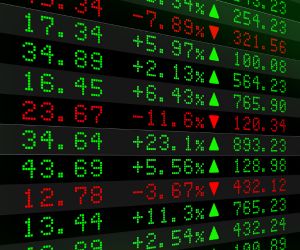This guide delves into the essential aspects of trading the Nikkei 225, from understanding the index to exploring various trading strategies. Discover why the Nikkei 225 is a cornerstone in many investment portfolios due to its diversification and liquidity benefits. Learn advanced techniques such as leverage, pair trading, and algorithmic trading to enhance your trading. We also cover essential tools and resources, including research platforms, educational materials, and trading communities that keep you informed and connected. Additionally, our guide emphasizes the importance of emotional control, robust risk management, and continuous learning to successfully navigate the complexities of the market. Finally, we offer practical insights to guide you in creating a detailed trading plan and leveraging technology to refine your strategies. Dive in to equip yourself with the knowledge and tools needed to successfully trade the Nikkei 225.

How to Trade the Nikkei 225 Index
The Nikkei 225 is Japan's main stock index and one of the most important in the world. It represents 225 of the largest companies listed on the Tokyo Stock Exchange (TSE), including technology, industrial, and financial giants. Its volatility and strong correlation with global markets make it an attractive asset for traders.
Characteristics of the Nikkei 225 in Trading
High Volatility: It often experiences significant movements, especially after the Asian market opens.
High Liquidity: Large trading volume with competitive spreads in CFDs and futures.
Correlation with the Japanese Yen (JPY): A weak yen benefits Nikkei 225 exporting companies.
Trading Hours: Traded on the Tokyo Stock Exchange (TSE) from 09:00 to 15:00 (Japan time), with a break from 11:30 to 12:30. It can also be traded on futures and CFDs platforms almost 24/5.
Instruments for Trading the Nikkei 225
Nikkei 225 Futures: Traded on the CME and the Osaka Exchange, allowing leveraged trading.
Nikkei 225 CFDs: A popular option among retail traders due to their accessibility.
Nikkei 225 ETFs: An alternative for those seeking exposure without using derivatives.
Nikkei 225 Options: Tool for hedging or speculation strategies.
Trading Strategies for the Nikkei 225
1. Trading in the Asian Session
The Nikkei 225 has high volatility at the opening of the Japanese market. Key strategies include:
Opening Breakout: Identify breakouts in the first hour of trading.
Scalping: Short-term strategies taking advantage of initial movements.
2. Trend Strategy
The Nikkei 225 tends to follow prolonged trends, influenced by Wall Street and macroeconomic data. Recommended tools:
Moving Averages (50 and 200): Identification of trend changes.
Price Channels: Use of dynamic support and resistance.
3. Pullbacks and Reversals
After strong movements, the index offers reversal opportunities. Key methods:
Fibonacci: Identification of retracements after major impulses.
RSI: Entries in oversold or overbought zones.
4. Correlations and Global Factors
The Nikkei 225 is sensitive to various external influences, such as:
Japanese Yen (JPY): A weak yen favors exporters and can drive the index.
S&P 500 and Dow Jones: Bullish performance on Wall Street can positively influence the Nikkei 225.
Economic Data from Japan: Indicators such as GDP, inflation, and Bank of Japan decisions affect the market.
Risk Management when Trading the Nikkei 225
Mandatory Stop-Loss: Protects against high volatility.
Leverage Control: Avoid overexposure in volatile markets.
Monitoring Macroeconomic Data: Key events such as Bank of Japan decisions can trigger sharp movements.
Discipline and Planning: Trade with a defined strategy and avoid impulsive decisions.
SWOT Analysis of the Nikkei 225
This SWOT analysis evaluates the Nikkei 225, Japan's leading stock index, considering the strength of Japan's technological and manufacturing sectors and the country's demographic and economic challenges.
Strengths:
Innovation and quality: Japan is renowned for its technology and industrial efficiency, reflected in the Nikkei.
Institutional stability: A robust financial system and prudent policies support the index.
Weaknesses:
Aging population: The demographic decline may limit long-term economic growth.
Low growth rates: Moderate economic growth affects the index's appreciation potential.
Opportunities:
Structural reforms: Policies to revitalize the economy and increase productivity can boost the Nikkei.
Technological innovation: Investment in new technologies and digitalization can foster growth.
Threats:
Global instability: International crises and geopolitical tensions can affect the Japanese economy.
Risks of restrictive monetary policies: Decisions by the Bank of Japan can generate volatility.
What is an International Stock Broker?
An International Stock Broker is the entity (or platform) that allows you to buy and sell shares of companies listed on stock exchanges in various countries around the world. Unlike a local brokerage, the main focus of International Brokers is to provide access to global markets, such as the US, European, or Asian markets.
Why do we need an International Stock Broker?
Investing in international stocks can be an excellent way to diversify your portfolio as it gives you the opportunity to participate in the growth of economies and sectors worldwide. However, trading in global markets is not as straightforward as in the local market: it requires specific knowledge, compliance with international regulations, and the use of advanced trading platforms.
An International Stock Broker brings all these investment opportunities together in one place and allows you to access different exchanges and trading conditions, in exchange for a commission.
Examples and Comparatives:
There are several well-known International Stock Brokers, such as Interactive Brokers, eToro, TD Ameritrade, or Saxo Bank, among others. Each offers trading platforms with particular features and commissions that vary according to the service. Some excel in providing market advice and analysis in various languages, while others may offer more competitive operational costs or social investment tools. These details allow you to choose the option that best suits your needs and investor profile.
Regulatory and Security Aspects
It is crucial that the International Stock Broker you choose is regulated by recognized entities in the country where it operates, such as the U.S. Securities and Exchange Commission (SEC) in the United States, the Financial Conduct Authority (FCA) in the United Kingdom, or the Securities and Exchange Commission (CVM) in Brazil, among others. This supervision ensures that the broker complies with strict security and transparency standards, providing you with greater confidence when investing your money.
How do Brokers "connect" to International Markets?
Through agreements with foreign stock exchanges and the use of advanced technological platforms, International Stock Brokers process buy and sell orders placed by their clients. They order transactions according to price, order of arrival, and other parameters, charging a commission when the transaction is executed. This technological infrastructure allows operations to be carried out quickly and securely, facilitating real-time tracking of your investments.
In conclusion, an International Stock Broker is your gateway to the most important stock markets in the world. Thanks to its regulation, trading platforms, and knowledge of global markets, you can diversify your portfolio and seek growth opportunities in different sectors and countries.





